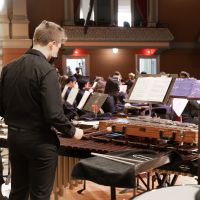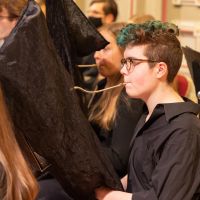The Art of Listening
Tips to Help You Master the Art of Listening
If we've learned anything about music over the last two years, it is the power of live music. Whether listening to a masterful piece by one of the classical giants or a lead-edge work by a living composer, orchestral music invites you into a musically daring adventure filled with excitement or stillness, joy or sadness, or triumph or loss. Your main job is to listen and be affected by what you hear. Let the music provoke you and inspire you.
Here are a few tips to help you master the art of listening:

LISTEN AS CLOSELY AS YOU CAN
You've most likely heard people describe orchestral music as a relaxing escape or a perfect soundtrack to daily life. Truth is, if you listen closely, you'll hear more, notice more, and appreciate the artful message woven between the notes.

TRY TO HEAR THE UNIQUE QUALITIES THAT THESE PERFORMERS BRING TO THE PERFORMANCE
A composer is a partner in the creation of a concert. They provide the blueprint for the performance while the orchestra builds the house and adds the ornaments and furniture. With the freedom of interpretation, no single piece sounds the same.

WHAT TO LISTEN FOR
Music is organized sound, filled with patterns, themes, and moods. Close your eyes and try to visualize what you hear. Do you see colors, shapes, characters or dancers, places, or locations? What is the story that is unfolding?

AS YOU ARE LISTENING
Ask yourself the following questions:
- What is the mood, feeling, or character of the music, is it staying the same or changing?
- Loudness or softness? Does it suddenly change?
- Timbre; what instruments are sounding together? What new sounds are created by different combinations of instruments?
- What is the tempo of the music? Can I feel the beat in my body?
- Do you notice recurring themes that you heard previously?
- What are the other instruments doing if they don’t have the melody?
- Musical conversations. Do different instruments or sections call or respond to each other? 8. Rhythms and emphasis. How are the rhythms different or complimentary?

MUSIC IS A TAPESTRY
When you take the time to listen and enjoy it, you will always hear something new or different. You don't need to be a musician or an aficionado to enjoy an ESYO concert. All you need is an open ear and an open mind. Let the music affect you, visualize what you hear, and connect it to your life. Most importantly, give yourself a break from email, social media, texting, and screens. Let the music speak to you, especially if it challenges you to listen differently.
